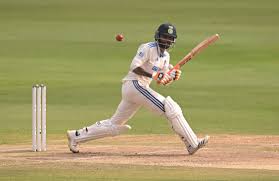Cricket: A Game of Passion and Legacy

Cricket, a sport steeped in history and tradition, has captivated millions across the globe for centuries. Originating in England in the 16th century, it has evolved into one of the most popular and widely played sports worldwide, particularly in countries like India, Australia, England, Pakistan, and South Africa. The essence of cricket lies not just in its competitive spirit but in the camaraderie, strategy, and sheer joy it brings to players and fans alike.
More information : https://idigiminds.com/digital-marketing/
The History and Evolution of Cricket

Cricket’s journey began on the fields of England, where it was initially a children’s game before gaining popularity among adults. By the 18th century, it had become England’s national sport, with matches drawing large crowds. The establishment of the Marylebone Cricket Club (MCC) in 1787 marked a significant milestone in cricket history, as the MCC laid down the first set of official rules and regulations, many of which still influence the game today.
The sport spread across the British Empire, taking root in the colonies. It found fertile ground in India, Australia, and the West Indies, where it quickly grew into a beloved pastime. The first international match was played between the United States and Canada in 1844, but the first official Test match took place in 1877 between England and Australia, marking the beginning of a storied rivalry.
Formats of the Game
Cricket is unique in its variety of formats, each bringing its own flavor and challenges. The three primary formats are Test cricket, One Day Internationals (ODIs), and Twenty20 (T20) cricket.
Test Cricket: Test matches, considered the pinnacle of the sport, are played over five days with each team having two innings. This format is a true test of endurance, skill, and strategy, often requiring players to demonstrate patience and resilience. The Ashes series between England and Australia is one of the most famous Test series, steeped in history and tradition.
One Day Internationals (ODIs): Introduced in the 1970s, ODIs revolutionized cricket by offering a more fast-paced and spectator-friendly version of the game. Each team faces a maximum of 50 overs, and the match is completed in a single day. The ICC Cricket World Cup, held every four years, is the premier event in ODI cricket, drawing massive global audiences.
Twenty20 (T20) Cricket: The newest and most explosive format, T20 cricket, was introduced in the early 2000s. Each team faces just 20 overs, resulting in a match lasting about three hours. This format has significantly increased cricket’s appeal, attracting a new generation of fans with its high-octane action and entertainment value. The Indian Premier League (IPL), a T20 tournament, has become one of the richest and most watched leagues in the world.
The Global Impact of Cricket
Cricket’s influence extends far beyond the boundaries of the field. In countries like India, cricket is not just a sport but a religion. Players like Sachin Tendulkar, Virat Kohli, and MS Dhoni are revered as demigods, and their achievements inspire millions. The sport has the power to unite people across diverse cultures and backgrounds, fostering a sense of national pride and identity.
In Australia, cricket is a significant part of the cultural fabric, with iconic players like Don Bradman and Shane Warne leaving an indelible mark on the sport. England, the birthplace of cricket, continues to celebrate its rich cricketing heritage while producing world-class talent.
The West Indies, a collection of Caribbean nations, have a storied history in cricket, known for their flamboyant style and legendary players like Sir Viv Richards and Brian Lara. South Africa, Pakistan, Sri Lanka, and New Zealand are also prominent cricketing nations, each contributing to the global tapestry of the sport.
The Future of Cricket
The future of cricket looks promising, with innovations in technology and gameplay enhancing the spectator experience. The use of Decision Review System (DRS), Hawk-Eye technology, and advanced analytics has added a new dimension to the game, making it more precise and exciting.
Grassroots programs and initiatives aimed at developing young talent are crucial for the sport’s sustainability. Women’s cricket is also experiencing a surge in popularity, with increasing viewership and support, paving the way for a more inclusive and diverse cricketing community.
Conclusion
Cricket’s enduring appeal lies in its rich history, diverse formats, and the passion it ignites in players and fans. It is more than just a game; it is a unifying force that transcends boundaries and brings people together. As the sport continues to evolve, cricket will undoubtedly remain a beloved pastime, inspiring future generations to take up the bat and ball.
Cricket: A Game of Passion and Legacy

Cricket, a sport steeped in history and tradition, has captivated millions across the globe for centuries. Originating in England in the 16th century, it has evolved into one of the most popular and widely played sports worldwide, particularly in countries like India, Australia, England, Pakistan, and South Africa. The essence of cricket lies not just in its competitive spirit but in the camaraderie, strategy, and sheer joy it brings to players and fans alike.
The History and Evolution of Cricket
Cricket’s journey began on the fields of England, where it was initially a children’s game before gaining popularity among adults. By the 18th century, it had become England’s national sport, with matches drawing large crowds. The establishment of the Marylebone Cricket Club (MCC) in 1787 marked a significant milestone in cricket history, as the MCC laid down the first set of official rules and regulations, many of which still influence the game today.
The sport spread across the British Empire, taking root in the colonies. It found fertile ground in India, Australia, and the West Indies, where it quickly grew into a beloved pastime. The first international match was played between the United States and Canada in 1844, but the first official Test match took place in 1877 between England and Australia, marking the beginning of a storied rivalry.
Formats of the Game
Cricket is unique in its variety of formats, each bringing its own flavor and challenges. The three primary formats are Test cricket, One Day Internationals (ODIs), and Twenty20 (T20) cricket.
Test Cricket: Test matches, considered the pinnacle of the sport, are played over five days with each team having two innings. This format is a true test of endurance, skill, and strategy, often requiring players to demonstrate patience and resilience. The Ashes series between England and Australia is one of the most famous Test series, steeped in history and tradition.
One Day Internationals (ODIs): Introduced in the 1970s, ODIs revolutionized cricket by offering a more fast-paced and spectator-friendly version of the game. Each team faces a maximum of 50 overs, and the match is completed in a single day. The ICC Cricket World Cup, held every four years, is the premier event in ODI cricket, drawing massive global audiences.
Twenty20 (T20) Cricket: The newest and most explosive format, T20 cricket, was introduced in the early 2000s. Each team faces just 20 overs, resulting in a match lasting about three hours. This format has significantly increased cricket’s appeal, attracting a new generation of fans with its high-octane action and entertainment value. The Indian Premier League (IPL), a T20 tournament, has become one of the richest and most watched leagues in the world.
The Global Impact of Cricket
Cricket’s influence extends far beyond the boundaries of the field. In countries like India, cricket is not just a sport but a religion. Players like Sachin Tendulkar, Virat Kohli, and MS Dhoni are revered as demigods, and their achievements inspire millions. The sport has the power to unite people across diverse cultures and backgrounds, fostering a sense of national pride and identity.
In Australia, cricket is a significant part of the cultural fabric, with iconic players like Don Bradman and Shane Warne leaving an indelible mark on the sport. England, the birthplace of cricket, continues to celebrate its rich cricketing heritage while producing world-class talent.
The West Indies, a collection of Caribbean nations, have a storied history in cricket, known for their flamboyant style and legendary players like Sir Viv Richards and Brian Lara. South Africa, Pakistan, Sri Lanka, and New Zealand are also prominent cricketing nations, each contributing to the global tapestry of the sport.
The Future of Cricket

The future of cricket looks promising, with innovations in technology and gameplay enhancing the spectator experience. The use of Decision Review System (DRS), Hawk-Eye technology, and advanced analytics has added a new dimension to the game, making it more precise and exciting.
Grassroots programs and initiatives aimed at developing young talent are crucial for the sport’s sustainability. Women’s cricket is also experiencing a surge in popularity, with increasing viewership and support, paving the way for a more inclusive and diverse cricketing community.
Conclusion
Cricket’s enduring appeal lies in its rich history, diverse formats, and the passion it ignites in players and fans. It is more than just a game; it is a unifying force that transcends boundaries and brings people together. As the sport continues to evolve, cricket will undoubtedly remain a beloved pastime, inspiring future generations to take up the bat and ball.

